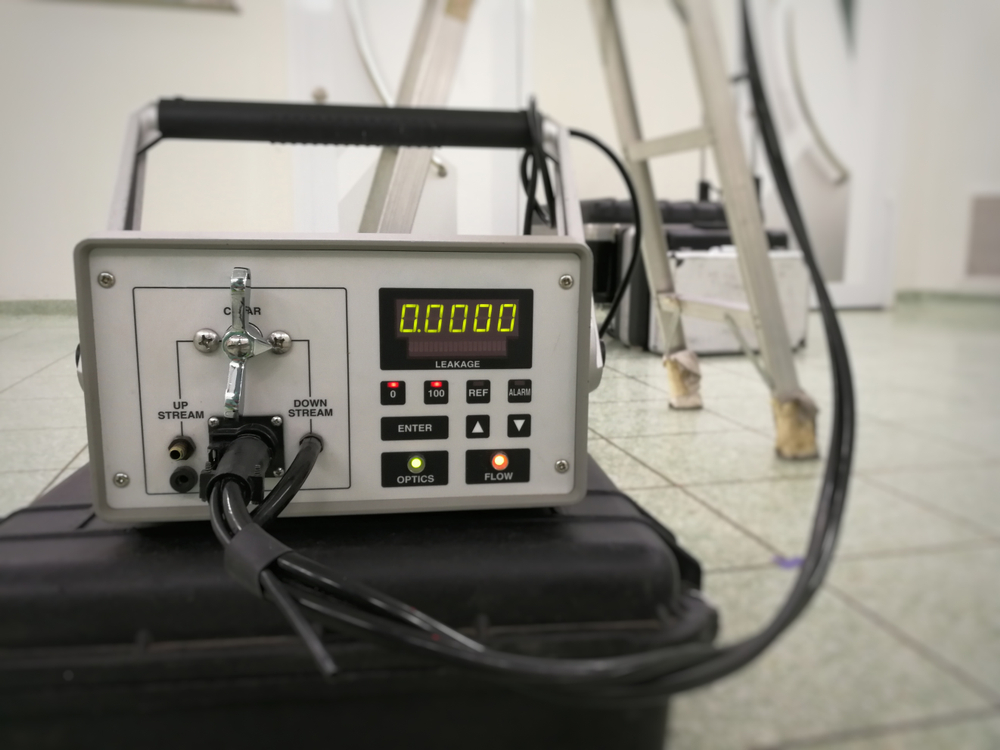
Image Credit: Sucharas Wongpeth/Shutterstock.com
Aerosols have recently been emphasized as a potential route of transmission of the severe acute respiratory syndrome coronavirus 2 (SARS-CoV-2). A recent publication by the World Health Organization (WHO) highlighted research that supports the role of aerosols in spreading the virus, drawing attention to the need for more research to elucidate the mechanisms underlying this route of infection.
To meet this need, a team of researchers in the Netherlands conducted a study to investigate aerosols' role in spreading the SARS-CoV-2 virus, particularly in public spaces. However, the direct measurement of aerosols has previously presented a challenge. To overcome this, the team demonstrated the validity of using handheld particle counters to perform direct measurements of aerosol concentrations in public spaces. The team used these findings to evaluate the relationship between aerosols' persistence in a public space and the risk of transmission of the COVID-19 virus.
Transmission of COVID-19 via respiratory droplets
Previous studies have highlighted the role of respiratory droplets that enter the air when a person infected with SARS-CoV-2 cough, sneezes, and speaks, in the transmission of the virus. Droplets that measure less than 5 μm are known as aerosols. These smaller droplets can remain suspended in the air for long periods, leading to the virus's airborne transmission, particularly in indoor settings with poor ventilation.
Gaining more in-depth knowledge of aerosols' behavior, such as how far they spread and how long they linger is vital to reducing transmission of the disease and controlling the global pandemic.
A new method of aerosol measurement
The laser sheet diffraction technique is usually used to measure aerosol concentration. However, this method is not appropriate for measuring aerosols in real-world settings as is necessary for instigating the spread of coronavirus, as it requires specialized personnel and can only be conducted in laboratory settings.
To address this, the Netherlands team used the Fluke 985 handheld particle counter, produced by Fluke, often used to assess air quality and to measure aerosols.
Click here to find out more about Fluke's handheld particle counters
Validating the use of handheld particle counters
As a first step, the scientists compared the novel technique's results with those previously collected using the laser diffraction technique. Comparisons revealed that both methods detected the aerosol particles that linger in the air after a person coughs. Both methods determined the number of aerosols per liter of air and the decrease in aerosols' volume over time.
The comparisons allowed the team to conclude that the novel method was reliable at measuring aerosol concentrations as a function of time as well as estimating the size distribution of the aerosols.
Read more: Different particle detectors on the market today
Conducting research in public spaces
Following validation of the use of handheld particle counters in measuring aerosols, the team then used the method to investigate these particles' behavior in real-world public spaces. Aerosol concentrations were measured as a result of breathing, speaking, coughing, and sneezing. They also examined the droplet concentration half-times, measuring how long they linger in the air.
Understanding how COVID-19 is transmitted
What was achieved by the research conducted in the Netherlands will be fundamental to understanding the nature of COVID-19 transmission. The team has proven the validity of using handheld particle counters in measuring the volume and spread of aerosols produced by breathing, speaking, talking, coughing, and sneezing, equipping scientists with a method of investigating airborne transmission.
The method will help researchers determine the risks posed of contracting the virus in different real-world situations. This will also help inform the guidance and regulations being put in place to curb infection spread.
Additionally, the method will likely play a vital role in preventing the spread of other infectious diseases such as tuberculosis, rubella (measles), and influenza. By measuring aerosols, handheld particle counters will likely help bring in more relevant and useful preventative measures.
*Important notice
medRxiv publishes preliminary scientific reports that are not peer-reviewed and, therefore, should not be regarded as conclusive, guide clinical practice/health-related behavior, or treated as established information.
References and Further Reading
Somsen, G., van Rijn, C., Kooy, S., Bem, R. and Bonn, D. Measurement of small droplet aerosol concentrations in public spaces using handheld particle counters. medRxiv. 2020 DOI: https://www.medrxiv.org/content/10.1101/2020.10.13.20211839v1
Disclaimer: The views expressed here are those of the author expressed in their private capacity and do not necessarily represent the views of AZoM.com Limited T/A AZoNetwork the owner and operator of this website. This disclaimer forms part of the Terms and conditions of use of this website.